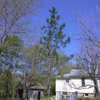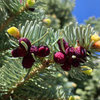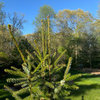Polution/temp change effect mycorrhizae?
picea
16 years ago
Related Stories

GARDENING AND LANDSCAPINGBid Bad Garden Bugs Goodbye and Usher In the Good
Give ants their marching orders and send mosquitoes moseying, while creating a garden that draws pollinators and helpful eaters
Full Story
KITCHEN DESIGNHow to Find the Right Range for Your Kitchen
Range style is mostly a matter of personal taste. This full course of possibilities can help you find the right appliance to match yours
Full Story











dcsteg
lou_spicewood_tx
Related Professionals
Londonderry Landscape Architects & Landscape Designers · Lakewood Landscape Architects & Landscape Designers · Oatfield Landscape Architects & Landscape Designers · Palm Springs Landscape Architects & Landscape Designers · Bound Brook Landscape Contractors · East Haven Landscape Contractors · Elmhurst Landscape Contractors · Fairhope Landscape Contractors · Firestone Landscape Contractors · Kearny Landscape Contractors · Los Banos Landscape Contractors · Rochester Landscape Contractors · Rockwall Landscape Contractors · Chicago Ridge Landscape Contractors · Crowley Landscape ContractorsFledgeling_
tsugajunkie z5 SE WI ♱
conifers
tsugajunkie z5 SE WI ♱
wisconsitom
conifers